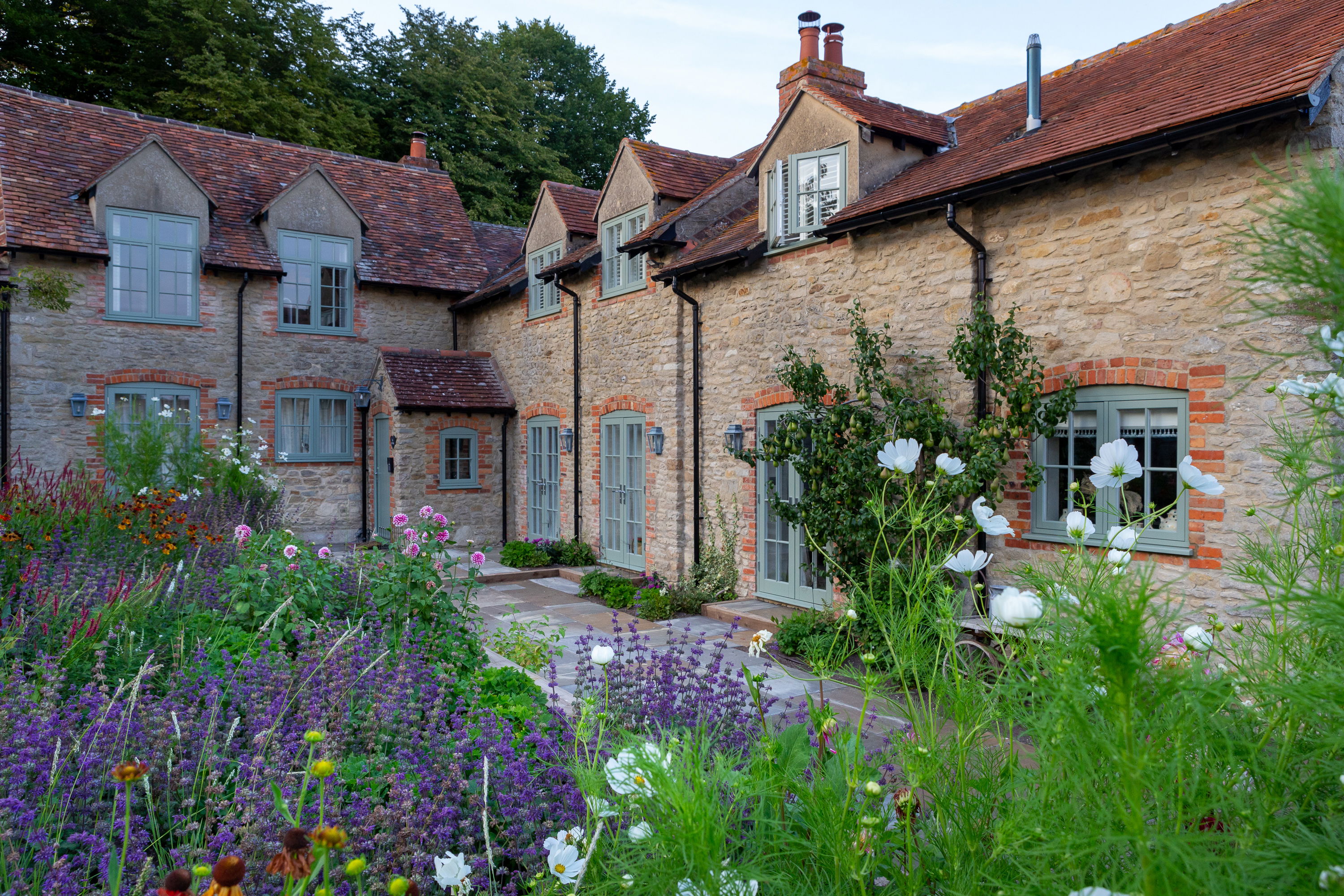
Building Biodiversity into Architectural Design.
As sustainability becomes increasingly important within the architectural world, our architects, interior designers and of course our landscape designers, are seeking innovative ways to design projects that benefit both the homeowners and the environment.
Our approach brings sustainability and ecology to the forefront of our projects, realising that we have a unique opportunity to amplify biodiversity through thoughtful design principles. Across all three of our divisions, we are working to design schemes that maintain and enhance local ecosystems.


The Importance of considering Biodiversity.
With the introduction of the mandatory Biodiversity Net Gain (BNG) in UK Planning earlier in 2024, designers must take extra steps to ensure the natural environments of project sites are left in measurably better conditions than previously.
Our landscape designers are already embracing the principles of BNG and have been doing so successfully since our Landscape Design Studio was established; we were thrilled to be recognised at the ProLandscaper Sustainability & Biodiversity Award in the Best Domestic Garden category in 2023. Whilst this is a major achievement for our Practice, we continue working towards translating this knowledge into the work of our Architecture and Interior Design teams.


As of today, less than 5% of new buildings are net zero, and even less are built considering biodiversity, as stated in a 2023 IEA report. Within the realm of residential design, biodiversity can often be one of the lesser priorities, but it is an essential element of ensuring the sustainability of our world’s ecosystems.
In the UK, insect populations have suffered a drastic decline in numbers – a report published by an alliance of Wildlife Trusts showed the loss of 50% of our insects since 1970.
We know that building biodiversity into our projects – from the very early stages – requires interdisciplinary collaboration. Hence, we regularly engage with ecologists and conservationists early in the design process to leverage their expertise and ensure that our designs align with conservation goals.
We are continually looking for opportunities to promote biodiversity-conscious design principles to our clients, educating them about the benefits of integrating nature into the built environment and inspiring them to prioritise sustainability in their projects.

How will your home be designed for Biodiversity?
At HollandGreen, we ensure your project is designed and built with biodiversity in mind. Our aim is for every commission to go beyond the basic concepts of sustainable architecture, to holistically integrate ecological resistance and biodiversity into the design.
So, what can you look out for within your new home’s design?
Each project is unique, but there are several core principles which our design teams work towards.
A Fabric First Approach: We consider the home’s orientation and envelope to maximise natural light, natural shading and ventilation where possible. Not only does this reduce energy consumption, but it can also have major health benefits on the home’s occupants.
Sustainable Materials: The UN environment programme states that in many regions, a shift to bio-based materials can save up to 40% in carbon emissions by 2050. The list of sustainable alternatives to conventional construction materials is ever growing, so we are using these where possible to minimise the environmental impact of our projects and reduce habitat destruction.
Green Space: Pockets of green space can be designed into projects from an early stage, by integrating features such as green roofs or walls. Not only do green roofs enhance the aesthetic appeal of projects, but they also provide habitats for diverse flora and fauna, hence boosting biodiversity. Permeable green areas can be complemented by water-efficient features, such as rainwater harvesting systems, to ensure the design also maximises water efficiency.
Ecological Enhancements: The UK’s Wildlife Trusts want to see at least 30% of land suitably managed for nature. This means our project sites must incorporate ecological measures such as bird boxes, bat boxes, and insect hotels where feasible. These can be both subtle and/or prominent, to suit the design.


The Bigger Picture
More than 8 out of 10 people consider biodiversity loss a serious problem and agree that solving the issue is important, as reported by a study by the European Environment Agency. Architects have the power to shape our built environment in ways that either support or diminish biodiversity. By embracing nature-inspired design principles, collaborating with experts, and advocating for sustainable practices, a future exists where architecture coexists harmoniously with the natural world. At HollandGreen, our clients’ projects are part of this.
“HollandGreen is committed to designing homes that contribute positively to global biodiversity. We make this a design priority from the beginning — not just as an afterthought.”
Stephen Green, Co-Founder and Partner, HollandGreen

What’s Next?
Get inspired by our Interior Design projects and Instagram page.
Whether you’re looking to transform your space or design an imaginative new build home or extension, we can work with you to create a space that is unique to your property and lifestyle.
As a Studio of architects, interior designers & landscape designers, we bring award-winning projects to life while taking a seamless and holistic approach to each design.
